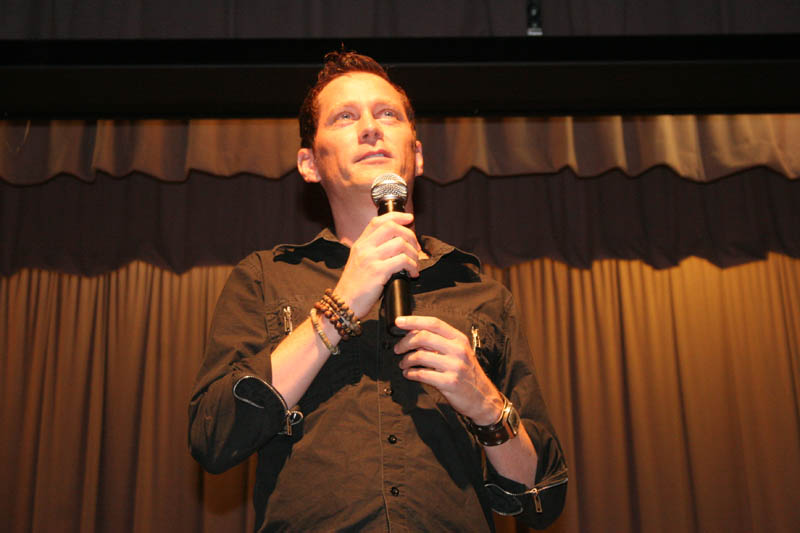Cal State Long Beach alumnus Eric Anderson discussed behavioral links to “homo-hysteria” yesterday in a speech titled “Being Straight is so Gay: The Improving Nature of Straight Masculinity.”
Anderson, an American sociologist at the University of Bath in England, “came out of the closet” on campus at the Lesbian, Gay, Bisexual, Transgender (LGBT) Student Resource Center.
“I always knew I was gay,” Anderson said.
As a researcher on the topics of men, sport and sexuality, Anderson discovered changing attitudes toward being a homosexual male in different spaces.
Anderson began with a memory from his childhood. He said he felt “electricity” around his male playmates as a child that he did not feel around his female playmates. At the age of 9, Anderson already knew he had to “fashion an excuse for looking [at other boys].”
Anderson’s speech focused on heterosexual behavior and homo-hysteria. According to Anderson, “the mid-1980s was the most homophobic period in history.”
Anderson pointed to three major factors: cultural backlash, the rise of fundamentalist Christians and the AIDS epidemic.
Anderson developed a theory that says “as cultural awareness of homosexuality rises, men will try to distance themselves from being thought gay.”
Homo-hysteria, as described by Anderson, can make a heterosexual man fear that anyone can be gay. Anderson points to the AIDS epidemic as being one of the biggest proponents of this hysteria.
At one point, AIDS had been considered a “gay disease” — but straight men were contracting it, and people began to panic.
“Heterosexuals had to prove over and over again that they were straight,” Anderson said.
Anderson used the phrase “policing heterosexual behavior” to describe what straight men were doing in the ’80s to prove their heterosexuality. He believes body language, clothes, sporting activities and other social interactions became indicators of being a “fag” or “straight.”
Anderson gave the example of a “man-bag.” Anderson recalled attending CSULB in the ’80s and seeing all guys wearing their backpacks on one shoulder.
“Two shoulders meant ‘fag,'” Anderson said.
Through his research, Anderson observed that today, men wear bags slung across their chest similar to women’s purses. For Anderson, this is proof of the changing tone that has been associated with homosexuals for years.
“Men can dress better and behave better because of the redefinition of heterosexual behavior,” he said.
Anderson also said men are now being accepted when they cry; crying is natural and is now becoming a part of masculinity.
“We are large, emotional bags of water,” Anderson said.
Clothing is a big indicator of sexuality, according to Anderson, who lives in England and sees straight men wearing an array of bright colors, including pink and pastel cardigans. According to Anderson, this is because homo-hysteria has decreased.
In 1992-93 there was a redefinition of masculinity. Bill Clinton played his saxophone on “Saturday Night Live.” Leonardo Di Caprio became a new sex idol at the time and his thin body changed heterosexual sex appeal.
Anderson also discussed how colors have become a symbol.
“Pink was not an acceptable color to wear [and] was coded as something for fags,” he said. “How does a color become coded for sexuality?”




